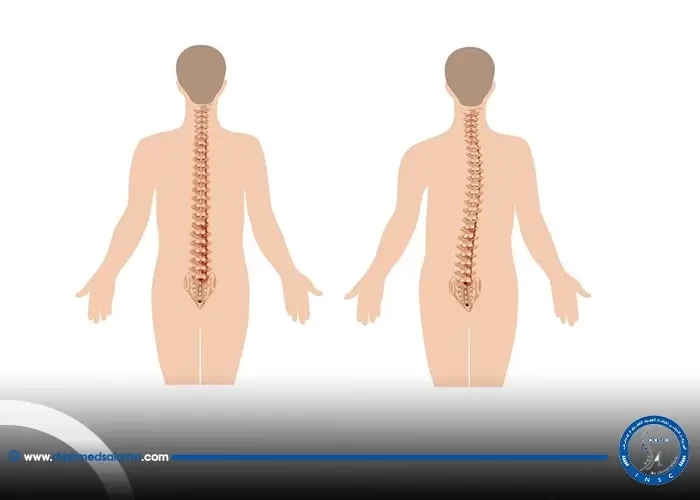Nasr City, 52 El Tayaran Street, in front of the Health Insurance Hospital

What is the success rate of spinal surgeries?

Spine surgeries are complex procedures that are typically carried out to relieve the symptoms of various spinal cord or nerve-related conditions. They can be invasive, require significant preparation, and carry inherent risks. Although many people who undergo spine surgeries experience an improvement in their symptoms, the success rate of these surgeries can vary considerably depending on a number of factors. In this article, we'll explore the rates of success associated with various types of spine surgeries and highlight some important considerations for those who are considering this type of treatment.
Introduction to Spine Surgeries
Spine surgeries have become a common treatment for chronic back pain and other spine-related issues. As stated in the previous sections, the success rates of these surgeries vary based on the specific procedure and individual patient factors. Despite the varying success rates, the number of surgeries performed annually continues to increase. It is important for patients to have a clear understanding of the potential benefits and risks associated with spine surgeries before making a decision. Spine surgeries should only be considered when non-surgical options have been exhausted and a thorough evaluation has been conducted by a qualified surgeon. With proper research and guidance, patients can increase their chances of a successful spine surgery with positive long-term outcomes.
Success Rate of Second, Third, and Fourth Back Surgeries
According to studies, the success rate of primary spinal surgeries is around 50%. However, for patients who undergo second, third, or fourth back surgeries, the success rate drops significantly. Only 30%, 15%, and 5% of patients respectively experienced successful outcomes from these types of surgeries. It's important for patients to understand the potential risks and limitations of multiple spinal surgeries before proceeding. While the success rates may not be ideal, patients with persistent pain and discomfort may need to explore alternative treatments or work closely with their surgeon to manage symptoms. As always, it's essential to consider all factors contributing to a successful surgery, including factors such as proper rehabilitation and follow-up care.
Lumbar Disc Surgery Success Rate
Lumbar disc surgery is one of the most common procedures performed to treat back pain. The success rate of this surgery varies but is generally between 49% to 90%. Patients may experience varying degrees of improvement in pain and functionality after the surgery. However, success rates can depend on several factors, including the severity of the condition and the patient's overall health. Despite the relatively high success rates, doctors usually recommend conservative treatment options before resorting to surgery. Additionally, patients should be aware of the potential risks and complications associated with lumbar disc surgery and discuss them with their surgeon before undergoing the procedure.
Success Rate of Decompression Spine Surgery
According to recent studies, the success rate of decompression spine surgery is quite high, with approximately 90% of patients experiencing good relief of leg pain after surgery. This type of surgery is successful in relieving leg pain in about 70% of patients, allowing significant improvements in function and ability to perform daily activities. However, it is essential to note that success rates can vary from one procedure to the other, and factors such as the patient's age, overall health, and the severity of the condition can influence the success rate of spinal surgery. Despite the high success rate of decompression spine surgery, it is vital to consider all available treatment options and discuss the potential risks and benefits with a qualified healthcare professional.
High Success Rate for Leg Pain Relief
Section 5: High Success Rate for Leg Pain Relief
When it comes to relieving leg pain caused by pressure on nerves in the spine, back surgery can often provide significant relief. The success rate for leg pain relief from back surgery is high, with success rates as high as 85-95% for non-surgical treatments, and even higher for surgical procedures. Lumbar decompression surgery is generally effective in relieving symptoms such as leg pain and numbness. However, some people may still experience symptoms after the surgery, so it's important to carefully consider all treatment options and consult with a qualified doctor before deciding whether to have back surgery. Ultimately, the success of spine surgeries for leg pain relief can vary based on a variety of factors, including the specific procedure being performed, the experience of the surgeon, and the overall health of the patient.
Success Rates Vary Based on Procedure
Spine surgeries are not a one-size-fits-all solution, and their success rates vary depending on the procedure being performed. Some procedures, like microdiscectomy, have a generally high success rate of good or excellent outcomes. On the other hand, procedures that require more bone, like posterior fusion, may have a higher risk of non-union. Different factors can also affect the success of spinal fusion surgery, such as age, smoking status, and level of physical activity. It's essential for patients to discuss their individual needs and expectations with their medical team to determine the best approach and potential outcomes for their specific situation. Proper communication and informed decision-making can contribute to the overall success of the surgery.
Factors Influencing Spinal Fusion Surgery Success
The success rate of spinal fusion surgeries can vary widely depending on a variety of factors. As previously mentioned, multiple spine surgeries can greatly decrease the chance of success, with rates dropping to as low as 5% after the third surgery. Additionally, smoking patients may experience impaired fusion success and higher complication rates. Other factors that can influence success include the type of fusion surgery performed, the number of motion segments fused, and the presence of degenerative disc disease or discogenic pain. Ultimately, it's important to carefully consider these factors before undergoing spinal fusion surgery, and to work closely with a qualified and experienced spine surgeon to optimize the chances of success.
Success Rates of Spine Surgery in India
According to factual data, the success rates of spine surgery in India are generally higher than in most other countries, with an average success rate of around 80%. This rate can vary depending on the type of treatment, with some procedures having success rates as high as 90%. Additionally, cervical spine surgery is also performed in India with good success rates. Patients who opt for spine surgery in India can have peace of mind knowing that they have a higher chance of success. However, it is important to consider all factors when deciding on spine surgery, and to choose a qualified and experienced surgeon who can guide patients through the process.
Cervical Spine Surgery and Success Rates
Cervical spine surgery is a common procedure that spine surgeons perform for various reasons related to the neck. The success rates for cervical spine surgeries are generally high, with one study showing an 80% success rate in India. However, several factors can impact the success of the procedure, including the patient's overall health, age, and the type of surgery performed. The success rate for cervical spinal fusion was found to be 50%, which is comparable to another group that underwent cognitive intervention and exercise. Ultimately, the success of any spine surgery can depend on careful planning before the procedure, a skilled surgeon, and proper rehabilitation post-surgery. Overall, while spinal surgeries can have high success rates, patients should always consult with their surgeon and carefully consider the risks and benefits before proceeding with any procedure.
Conclusion: Important Considerations for Successful Spine Surgeries
In conclusion, it's important to consider many factors when determining the success rate of spine surgeries. As discussed in previous sections, different types of spine surgeries have varying success rates, and factors such as age, location, and number of surgeries can all impact outcomes. Additionally, factors such as the patient's overall health, adherence to post-operative instructions, and the skill of the surgeon can also affect success rates. Furthermore, there are different techniques and technologies available that can improve success rates, such as the use of PMMA and PET/CT imaging. Ultimately, patients and healthcare providers should work together to determine the best approach for each individual case and ensure that all necessary considerations are taken into account to increase the likelihood of a successful outcome.
What is the success rate of spine surgeries?
The success rate of spinal surgeries ranges from 70 to 90%.






